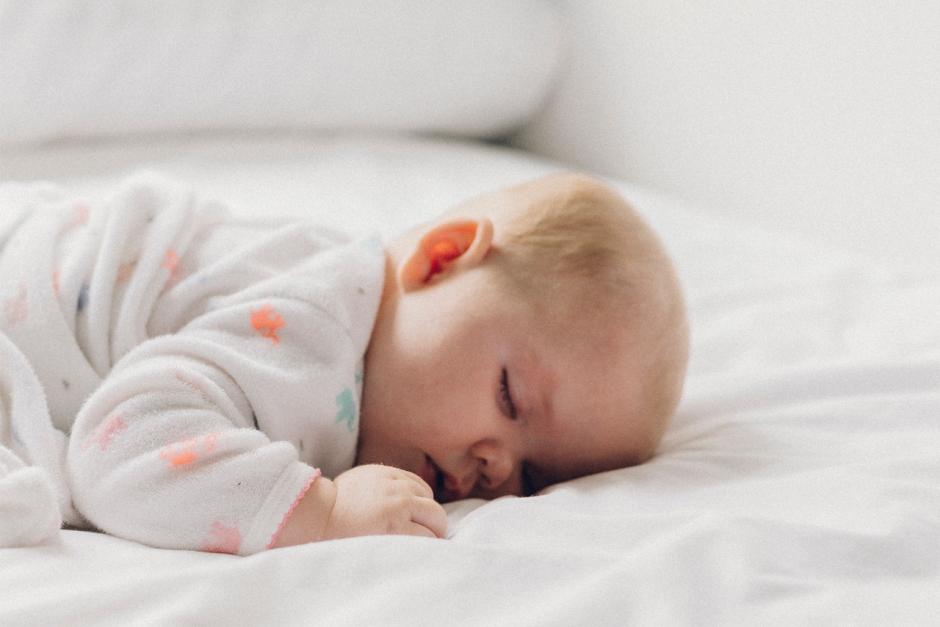Babies love to sleep. As a parent, you’ll learn to love those times that they finally go down for a nap too. You can sleep yourself, get on with some jobs or just catch up with an episode of Working Moms on Netflix! And when they finally sleep through the night… honestly there’s no better feeling.
But to help them get a good night's sleep, you need the right baby mattress. Here’s what you should be considering when it comes to buying one.
Why are baby mattresses important?
Sleep is important for all of us, but especially so for babies and children. Your child needs plenty of good quality sleep to grow and develop. Baby mattresses are specially designed to support babies comfortably from head to toe and to regulate their temperature. A baby mattress gives them the best chances of having quality sleep and naps. And that improves your chance of getting quality sleep too!
More than that though, the best baby mattresses are designed to keep kids safe. Babies need to sleep on firmer surfaces than regular mattresses. The mattress should be as flat as possible, well-fitting, waterproof and made of the right materials to reduce the risk of sudden infant death syndrome (SIDs).
How to pick the right baby mattress?
Baby mattresses are important. But how to make sure you pick the right one? Narrow down your options and zero in on the best choice by considering the following:
Fit
Most importantly, whatever type of bed you choose, you need to make sure the mattress you buy for it fits it perfectly.
When the mattress is laid down flat in your baby’s bed or Moses basket, it should fit the surrounding frame exactly. There should be no gaps at all between the mattress and the bed, and the mattress shouldn’t be able to move. Not only will this be more comfortable, but it’ll also keep your child safe too. A mattress with gaps around it, or even worse, a mattress that can shift around as your baby moves in their sleep, can be dangerous. It can increase the chance of your child becoming covered or trapped, which can lead to choking or suffocation.
Some baby beds come with mattresses that already fit them or the manufacturers recommend suitable mattresses. But if you’re buying a mattress separately (and many of the best baby mattresses do have to be bought that way), compare measurements between your baby’s bed and any mattresses you’re considering, to make sure they’re a perfect fit.
Firmness
Baby mattresses need to be firmer than most adult mattresses. This is because babies, especially newborns and young babies, don’t have the muscle strength to fully support and control their heads. They need a firmer mattress to hold them in a secure and safe position as they lie on their backs.
Whatever the material of mattress you consider, make sure it’s advertised as firm and that it feels stable to the touch and doesn’t deform or sag under the weight of your little one.
Breathability
This means how easily air can move through a baby mattress. This is important because it allows warm air and moisture to flow away from the mattress, stopping your little one from overheating. Good breathability can keep your baby comfortable as they sleep. Keeping them cool and dry can also reduce the risk of SIDS.
Look for mattresses that are made of breathable materials, and that have ventilation holes or breathable technology like cooling layers within the mattress.
Waterproofing
Leaks happen at night, especially during potty training. A waterproof mattress isn’t only easy to clean, but it will also stop wee soaking into the mattresses and degrading it. This makes sure the mattress stays in good condition for the long term. We recommend looking for baby mattresses that are waterproof on one or both sides, or that have removable waterproof covers.
A removable cover
Many baby mattresses come with removable, machine-washable covers that protect the mattress and are easy to remove and clean.
Double-sided mattresses
Double-sided mattresses are a great option. Even the best-made mattress will begin to deform and sag if it’s slept on the same way, nap after nap, night after night, for months and years. But with a double-sided baby mattress, it can be flipped over regularly to prevent it from deforming. This will ensure it continues to offer the necessary support over the years.
Hypoallergenic materials
Hypoallergenic materials are substances that don’t cause allergic reactions. If your little one is prone to allergies, or people in your family are (meaning your baby may inherit the same allergies), a baby mattress made of hypoallergenic materials is a sensible option.
Can I buy a second-hand baby mattress?
Baby mattresses can be expensive. Second-hand mattresses can seem like a great way to save money. However, they’re not recommended. So, why can’t you reuse a baby mattress? A used baby mattress can look fine from the outside, but it can be difficult to tell its internal condition. Layers inside the mattress may be damaged or degraded and the mattress may not offer the support or breathability it should. A second-hand baby mattress might look perfectly OK, but it may place your baby at risk of a bad night’s sleep or worse.
Avoid the temptation of a second-hand baby mattress. Think of the expense instead as an investment in your baby’s development and safety. A good baby mattress can last for years too. So, if you think of that cost divided by every nap and sleep your child has on the mattress, it will work out as one of the best value items you’ll invest in.
Sources:
https://www.naturalbabyshower.co.uk/blogs/b4baby/baby-mattress-buying-guide
https://www.madeformums.com/reviews/buyers-guide-to-baby-mattresses/



Leave a Comment: